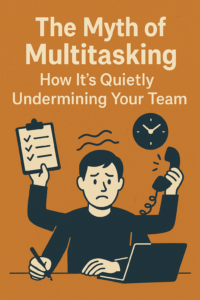Introduction
The modern obsession with morning routines has reached near-mythological proportions. From Silicon Valley founders to bestselling authors, successful people are often portrayed as curating their mornings like a sacred ritual. But is this daily structure truly transformational—or just productivity theater?
The answer lies at the intersection of behavioral psychology, chronobiology, and executive decision-making. A well-designed morning routine acts as a foundation for self-leadership, energy management, and consistent performance. It’s not about optimizing for hustle culture, but about designing intentional systems that reduce friction and support meaningful work.
This article unpacks what science actually says about morning routines, explores how high performers leverage them, and identifies what matters (and what doesn’t) when crafting your own.
The Psychology of Routines: Why Mornings Matter More Than You Think
Psychologically, routines serve as cognitive automation tools. Each decision we make consumes mental energy, a phenomenon known as decision fatigue. In the early morning, your brain is at its peak capacity for executive functioning—planning, self-control, and complex thinking.
A study by Roy Baumeister and colleagues at Florida State University introduced the concept of ego depletion, showing that self-control functions like a muscle—it can become fatigued through overuse. Morning routines allow high-priority actions to happen before your cognitive resources are drained by emails, meetings, and micro-decisions.
Moreover, routines provide predictability in a chaotic world, which reduces anxiety. Starting the day with familiar, self-directed actions signals psychological safety and control—both critical for focus and creativity.
A reliable routine helps transition from sleep inertia (mental sluggishness post-waking) into a state of mental clarity, engagement, and momentum.
Chronobiology and the Science of Circadian Timing
Chronobiology—the study of our internal biological clocks—demonstrates that our energy, alertness, and hormone production follow a predictable daily rhythm. In particular:
- Cortisol, the hormone responsible for wakefulness and attention, peaks 30–45 minutes after waking.
- Core body temperature, which influences reaction time and energy, rises steadily throughout the morning.
- Testosterone and dopamine levels, which affect motivation and confidence, are higher in the early hours.
Aligning your behaviors with these rhythms is known as circadian syncing, and research from the Salk Institute shows that routines built around natural light exposure and consistent sleep-wake cycles optimize alertness, emotional regulation, and immune function.
This is why routines that begin at different times of day produce inconsistent results. It’s not just what you do—it’s when you do it relative to your circadian phase.
📚 Source: Panda, S. (2018). The Circadian Code
What CEOs and High Performers Actually Do in the Morning
Media coverage of executive routines often skews toward spectacle—ice baths, 4 a.m. wakeups, or 20-step rituals. But qualitative studies and interviews reveal that the most successful leaders focus on simplicity, consistency, and alignment.
1. Intentional Stillness
Whether it’s mindfulness, prayer, or quiet reflection, high performers use silence to create space between stimulus and response. This cultivates emotional regulation, lowers baseline stress, and sharpens metacognition.
Marc Benioff (Salesforce) practices meditation daily. Oprah starts with gratitude journaling. These practices activate the parasympathetic nervous system and improve cognitive clarity for high-stakes decisions.
2. Physical Activation
Exercise elevates mood, boosts cognitive function, and improves energy metabolism. Many CEOs report that morning movement acts as a keystone habit, reinforcing discipline across their day.
The science backs this up. Aerobic exercise increases brain-derived neurotrophic factor (BDNF), a protein linked to memory and learning.
3. Strategic Reflection
Whether it’s journaling, planning, or reviewing goals, most high performers use mornings to orient toward their highest priorities. This reduces reactivity and increases task alignment.
CEOs like Jeff Weiner (LinkedIn) schedule “nothing time” for thinking. Jack Dorsey walks five miles to work—not just for health, but to process ideas in solitude.
4. Consistent Wake Times
Regularity matters more than intensity. Sleep research confirms that consistent wake and sleep times improve mood stability, hormone balance, and cognitive performance—making this the true non-negotiable for morning success.
The Morning Routine Myths (And What to Ignore)
With the rise of social media self-optimization, many myths about morning routines persist:
- Myth 1: Waking up early guarantees success. Chronobiotype varies. “Morning people” (larks) and “evening people” (owls) differ genetically. What matters is consistency and quality of routine, not early hours.
- Myth 2: A routine should be highly structured and efficient. While structure helps, over-optimization leads to rigidity. Real life requires routines that are resilient, not brittle.
- Myth 3: You need multiple steps and tools. Some of the most effective routines are deceptively simple. Meditation, movement, water, and clarity of purpose beat expensive gadgets and 10-step systems.
- Myth 4: Mornings are for grinding. Pushing yourself into high-effort tasks too soon can backfire. A slow, deliberate ramp-up supports better performance.
Designing Your Own Morning Routine: Principles Over Prescriptions
Crafting your own morning ritual starts with identifying your cognitive rhythms, emotional needs, and environmental context. Instead of copying others, tailor a structure that supports your identity and values.
1. Start with one keystone habit.
Choose an anchor behavior that’s low-friction but high-leverage. Examples:
- Drinking a full glass of water
- 10 minutes of freewriting
- 5 sun salutations
Consistency breeds momentum. Build from there.
2. Design for flow, not force.
Your routine should move you from rest to readiness. Use sensory cues:
- Natural light to signal wakefulness
- Aromatherapy to associate with clarity
- Soundtracks that match your ideal tempo
3. Create behavioral scaffolding.
Stack behaviors by cue → action → reward. For instance:
- Wake up → open curtains → drink water → stretch → read 1 page
This makes execution automatic and enjoyable.
4. Make it resilient.
Traveling, illness, or parenting can disrupt routines. Identify your minimum viable ritual—a 5-minute version you can maintain anywhere.
5. Protect the input phase.
Avoid email, news, and social media in the first hour. This protects your attention and prevents emotional hijacking by external stimuli.
FAQ
Q: What’s the ideal length of a morning routine?
There’s no universal standard. The best routines match your lifestyle, goals, and attention span. Some leaders spend 15 minutes; others use 90.
Q: Is skipping a routine harmful?
Not inherently. Flexibility is key. If you fall off, return to your keystone behavior. Progress depends on consistency, not perfection.
Q: What’s more important: morning routine or evening routine?
They’re symbiotic. Sleep quality determines morning energy. An intentional wind-down (no screens, dim light, calming activities) sets up a strong start.
Q: Can night owls benefit from morning routines?
Yes. The “morning” is relative to your natural wake time. Routines still improve cognitive priming and emotional regulation regardless of hour.
Final Thoughts
Morning routines are not about mimicry or trend-chasing. They’re about conscious alignment—the practice of beginning your day with behaviors that reflect who you want to be.
From a neuroscientific and psychological lens, the early hours hold rare cognitive leverage. By protecting this time with structure, intention, and purpose, you lay the groundwork for deeper focus, better decisions, and sustainable success.
You don’t need to wake up before dawn, journal for an hour, or drink buttered coffee. You just need to ask:
What ritual would help me meet the day—not on autopilot, but on purpose?




